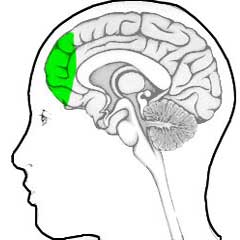Bullying goes on everyday in all walks of life. There are different forms of bullying, be they physical, verbal, or sexual. However, all of them are demeaning and hurtful to the person on the receiving end. It occurs at school, in the work place, in the home, and even at church. It is everywhere, and the worst part is that bullying is a vicious cycle, where the victims often become bullies themselves.
Bullying can be deadly. Thirteen years ago, April 20, 1999, the tragic school shooting at Columbine High School showed us just how deadly it can be. The death of 12 students and 1 teacher evoked a lot of debate around gun control laws, the role of violent video games, and school security. However, it also began to shed light on bullying as a root cause of tragedies such as this one, forcing people to address the problem that the two students/gunmen responsible had been outcasts and bullied to a point of mental distress. Bullying generally can start at school. While it is hard to imagine how one could hope to control such a widespread problem, schools are beginning to do just that. A colleague and I recently had the opportunity to tour Dallas Academy and see first hand how a school is combating bullying in the hallways and classrooms.

Leigh Richardson, Henri Braun and Dallas Academy Headmaster Jim Richardson discuss the school's bullying program.
Dallas Academy, who’s mascot is the bulldog, works with a unique group of students. Their mission statement is to restore the promise of full academic enrichment to students with learning differences. Learning differences often involve problems with reading and writing, and their curriculum involves two hours a day skill work on these problem subjects. And, the kids love it. We walked in and out of the classrooms as Headmaster Jim Richardson, asked the students if they were having fun, only to be answered by emphatic and sincere groupings of “yes” at every turn. I kept waiting for that one “no” but it never came. Jim has been there since 1983, and knows the school from the ground up. He has been involved in activity at every level. What he and his team have created there is pretty special. As we toured the campus Henri, one of my colleagues noted how relaxed all of the students appeared. The campus is very peaceful, with plenty of trees and natural light, and feels like a warm and nurturing place that fosters learning.
So, in this beautiful setting where everyone is having so much fun learning, why would Dallas Academy spend over a year training its teachers and administrators on an anti-bullying program? It is an expensive and time consuming process. WHY? It’s because those who work at the Dallas Academy appreciate the unique population of students that they have. They understand the difficulties that these students have had in other environments, and want better for their kids. It’s as simple as that. They realize that even in an environment such as this, the potential for bullying still exists. Despite all the successes and hard work, the faculty at Dallas Academy knows that the students are only human. With the help of their teachers and staff, these students who could have otherwise easily fallen into bullying have managed to rise above and make the Dallas Academy a haven and natural environment for learning and personal growth. The administrators walk their talk, and so do the students and their parents.
Please take the opportunity to learn more about their bullying program, and visit the campus on May 9th for a parent’s presentation on bullying. For more information click here, http://www.dallas-academy.com/.
If you have a child with learning differences, or if you think that your child may be a victim of bullying, then take this opportunity to learn what you as a parent can do to help your child. You won’t be sorry if you go. I was so inspired during my first vist, I can’t wait to go back. The kind of example that the Dallas Academy is setting might even cause you to stop and examine your own daily practices, and ask yourself how you can better the environment in which you work and learn in.




